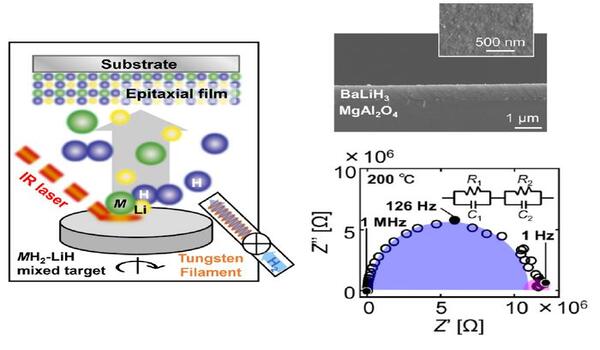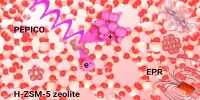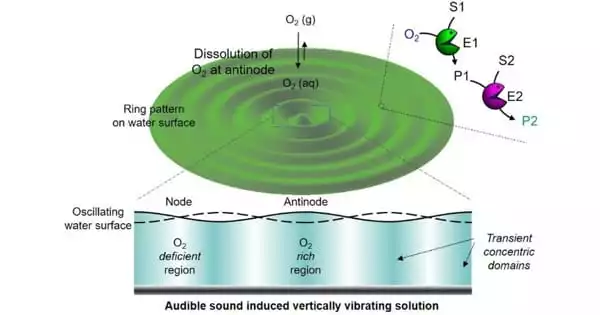Perovskites are currently a popular topic in materials research because to their exceptional features and possible applications, which include sustainable energy technologies, catalysis, and optoelectronics, to name a few. Perovskites hydrides, which contain hydrogen anions (H−), are known for their hydrogen-derived characteristics. Many experts believe that these compounds will be important in the research and development of hydrogen storage technologies such as fuel cells, next-generation batteries, and energy-saving superconducting cables.
Although perovskite hydrides are a unique platform for applied materials science, defining their physical properties has proven difficult. Measuring the H− conductivity of these crystalline materials is challenging. Most studies use powdered samples in their characterisation assessments, which means that H− conduction is impacted by imperfections (‘grain boundaries’) in the crystals. To accurately measure the intrinsic H− conductivity of a perovskite, it is necessary to create a uniform, continuous single crystal with few defects. This is difficult to accomplish for complicated ternary perovskite hydrides, and only a few research groups have tried.
Novel secondary batteries and fuel cells may be developed using hydride-ion conduction. Such technologies could encourage the spread of electric vehicles and renewable energy, ultimately contributing to the construction of an energy-saving sustainable society.
Dr. Fukushi
In a recent study released online on March 25, 2024 and published in ACS Applied Energy Materials on April 8, 2024, a team of researchers, including Doctoral course student Erika Fukushi from the Department of Regional Environment Systems of the Graduate School of Engineering and Science at Shibaura Institute of Technology (SIT), Japan, decided to take on the challenge. The researchers used an innovative technique to generate high-quality single crystals and conducted some of the first intrinsic conduction tests on ternary perovskite hydrides. Fumiya Mori, Kota Munefusa, and Hiroyuki Oguchi from SIT collaborated on this study, as did Takayuki Harada from the National Institute for Materials Science.
To create the perovskite single crystals, the researchers developed and pioneered a potent approach known as “H-radical reactive infrared laser deposition.” This method includes shining an infrared laser at a revolving disk-shaped pellet containing the metal atoms of the desired perovskite. The researchers aimed to make MLiH3 (where M is either Sr or Ba), therefore the pellet was formed from a clumsily compacted mixture of MH2 and LiH powders. As the laser heated the pellet, the metals were released into an H-radical-rich atmosphere created by infusing hydrogen into the reaction chamber via a heated tungsten filament.

Nearby the pellet was a carefully selected substrate, onto which the hydrogen and metals spontaneously combined to form the desired perovskite. As atoms began to pile up onto the substrate, they spontaneously arranged and aligned themselves in a consistent manner with the crystal layers below them. This led to the epitaxial growth of a nanofilm on the substrate. “Our approach is unique in its ability to perform deposition in a radical hydrogen atmosphere, significantly promoting the reaction between the metal and hydrogen,” explains Fukushi. “This results in the synthesis of single-phase hydride thin films by fully hydrogenating the metal atoms that naturally tend to persist in the film.”
The researchers performed multiple laser depositions under a variety of conditions and thoroughly characterized the resulting thin films. Using many advanced techniques, including X-ray diffraction, atomic force microscopy, and scanning electron microscopy, they determined the elemental distribution and crystallinity of each of the films. In this way, they determined the optimum conditions in their experimental setup for growing well-ordered, single-crystal MLiH3.
The team was able to undertake H− conductivity studies after establishing the films did not have grain boundaries. These were the first measurements of the crystals’ intrinsic H− conductivity, which is important for selecting materials for hydrogen-related applications. “Novel secondary batteries and fuel cells may be developed using hydride-ion conduction,” Fukushi says. “Such technologies could encourage the spread of electric vehicles and renewable energy, ultimately contributing to the construction of an energy-saving sustainable society.”
With any luck, this novel method for producing high-quality perovskite hydride crystals will pave the way for new horizons in hydrogen materials science and sustainability.
















